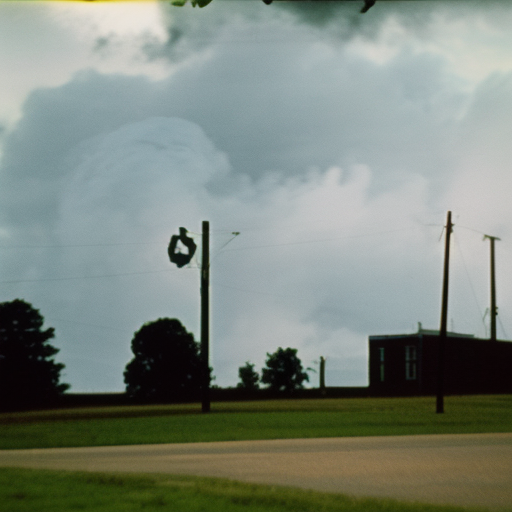Summary:
The 1953 Flint-Beecher tornado was a devastating tornado that struck the town of Beecher, Michigan, on June 8, 1953. It was one of the deadliest tornadoes in American history, resulting in significant loss of life and widespread destruction. The tornado had a path length of approximately 27 miles and reached a maximum width of 800 yards. It caused extensive damage to homes, businesses, and infrastructure in the area, leaving a lasting impact on the community.
Tornado Formation and Path:
The Flint-Beecher tornado formed as part of a larger severe weather outbreak that affected several states in the Midwest. The tornado developed near the town of Gaines, Michigan, and moved northeast towards Beecher. It followed a path that cut through several communities, including Mount Morris, Beecher, and Flint. The tornado dissipated near the town of Lapeer, leaving a trail of destruction in its wake.
Impact and Destruction:
The tornado caused widespread devastation along its path. It destroyed or severely damaged numerous homes, schools, and businesses. The Beecher School, a local elementary school, was completely leveled, resulting in the tragic loss of 116 lives, including 38 students and 6 teachers. The tornado also caused significant damage to the nearby St. Bartholomew’s School, where 18 students lost their lives.
Response and Recovery:
In the aftermath of the tornado, emergency services and volunteers worked tirelessly to rescue survivors and provide assistance to those affected. The community rallied together to support one another and begin the process of rebuilding. The American Red Cross and other relief organizations provided aid and resources to help the affected residents recover and rebuild their lives.
Lessons Learned:
The Flint-Beecher tornado served as a wake-up call for improved tornado forecasting and preparedness. The lack of advanced warning systems at the time meant that many residents were caught off guard by the tornado’s sudden arrival. This event highlighted the need for better communication and early warning systems to help save lives in future severe weather events.
Long-Term Impact:
The Flint-Beecher tornado had a lasting impact on the affected communities. It led to significant changes in building codes and safety regulations, with a focus on constructing tornado-resistant structures. The disaster also prompted advancements in meteorological technology and the development of improved tornado forecasting methods. The memory of the tornado and its devastating consequences remains ingrained in the collective memory of the community.
Conclusion:
The 1953 Flint-Beecher tornado was a catastrophic event that caused widespread destruction and loss of life. It served as a catalyst for advancements in tornado forecasting and preparedness, leading to improved safety measures and early warning systems. The resilience and unity displayed by the affected communities in the face of such devastation continue to inspire and serve as a reminder of the importance of preparedness in the face of natural disasters.












